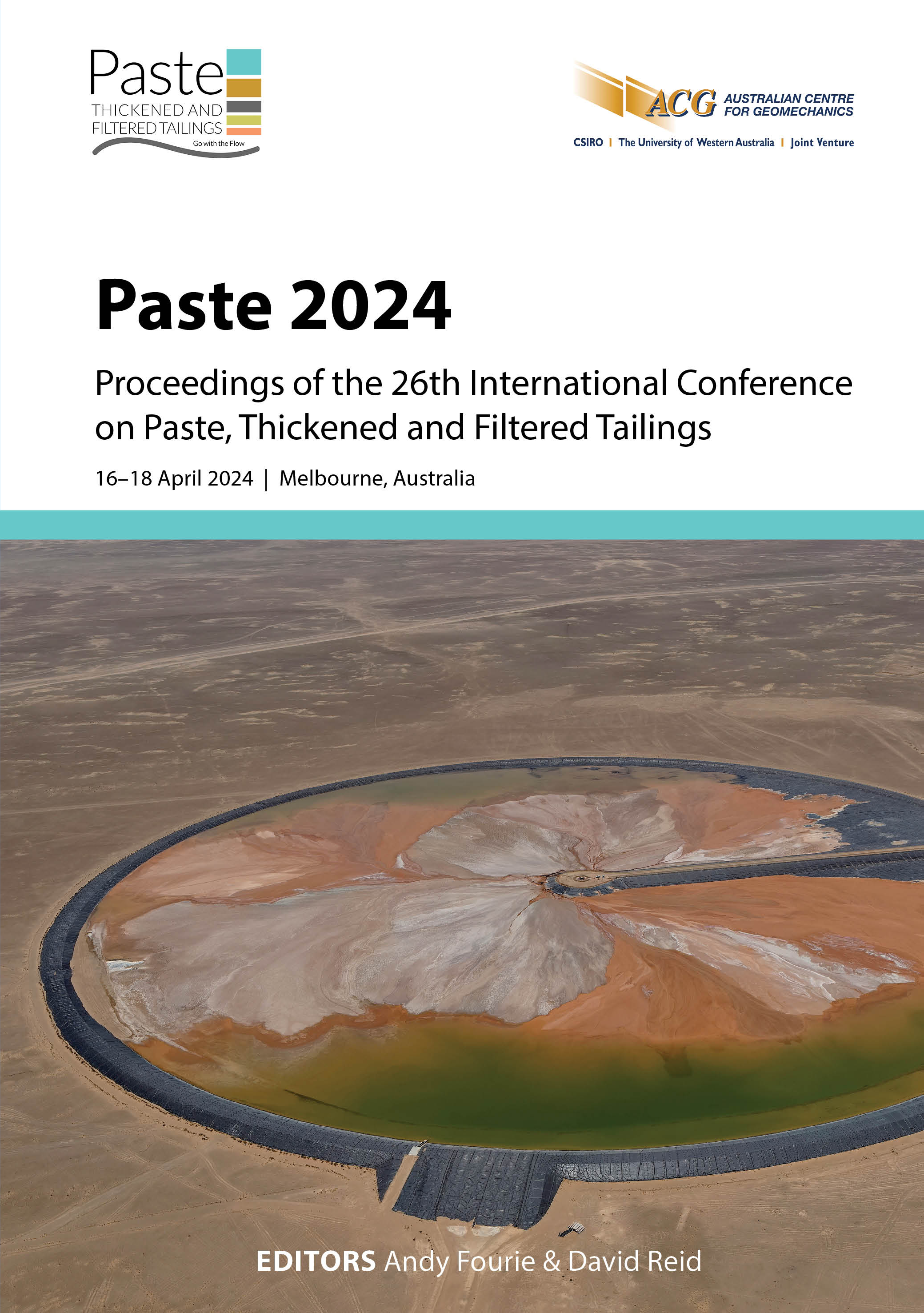Dewatering capabilities of Terraflowing™ technology for tailings

|
Authors: Kruyswijk, JB; Kilcullen, A |
DOI https://doi.org/10.36487/ACG_repo/2455_13
Cite As:
Kruyswijk, JB & Kilcullen, A 2024, 'Dewatering capabilities of Terraflowing™ technology for tailings', in AB Fourie & D Reid (eds), Paste 2024: Proceedings of the 26th International Conference on Paste, Thickened and Filtered Tailings, Australian Centre for Geomechanics, Perth, pp. 171-180, https://doi.org/10.36487/ACG_repo/2455_13
Abstract:
Tailings dewatering through high-pressure cycloning produces high-density tailings which, depending on the particle size distribution (PSD), can be used as a coarse sand resource or deposited as high solids concentration tailings. The TerraflowingTM dewatering process includes one or more high-pressure cycloning steps to produce a highly dewatered product. The process has been tested in the Weir Technical Centre (WTC) on more than eight different tailings samples, representing five commodities. Copper and gold tailings make up the majority of the tested samples, but iron ore, nickel and coal tailings have also been tested. These tests have proven to deliver comparable positive results for different samples. Adjusting the operational conditions, specifically the feed pressure of the cyclone, is known from previous work to accommodate variations in PSD. The compared results for the individual samples have been produced with optimal equipment settings for the tested sample. Comparing the results of the tested samples indicates that a steady recovery of solids and steady underflow density is achieved in the primary cycloning step. For most of the considered samples, this step produces a selfdraining product with 70 to 80% solids concentration by weight. The solids concentration of the final blended product is controlled by the level of dewatering achieved in the final centrifugation step. The maximum dryness of the pulp depends on the (ultra) fines fraction. A finer tailings achieves a lower pulp moisture level; hence the blended solids concentration is affected. The presence of a significant percentage of fines has a positive effect on the ability to produce paste. This paper explores the versatility of the process and its capability to generate high-density products across various commodities with different tailings characteristics. The impact of variations in PSD and feed solids concentration on dewatering performance is illustrated through the testwork results.
Keywords: tailings, tailings dewatering, terraflowing, hydrocyclone, hydrocyclone, decanter centrifuge, performance comparison, copper tailings, iron ore tailings, nickel tailings, gold tailings, zinc tailings, coal tailings, repurposing, paste tailings, high-density tailings, tailings management, water preservation
References:
Steward, N, Stephenson, D & Engelhardt, D 2020, Terraflowing™ – An Innovative and Flexible Method for Tailings Dewatering, presentation at Paste 2020: 23rd International Conference on Paste, Thickened and Filtered Tailings, Santiago.
© Copyright 2025, Australian Centre for Geomechanics (ACG), The University of Western Australia. All rights reserved.
View copyright/legal information
Please direct any queries or error reports to repository-acg@uwa.edu.au
View copyright/legal information
Please direct any queries or error reports to repository-acg@uwa.edu.au
